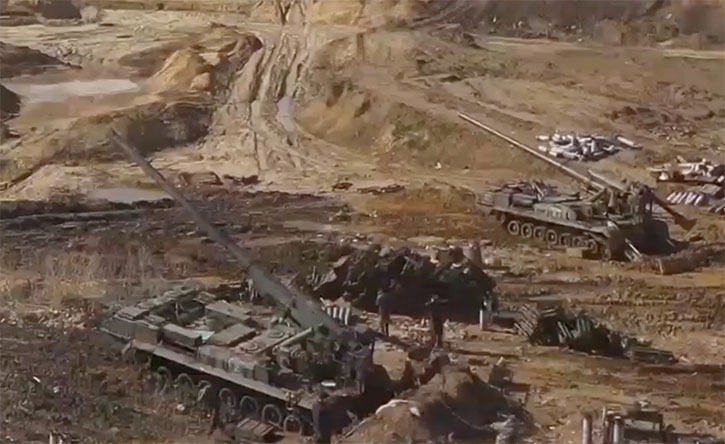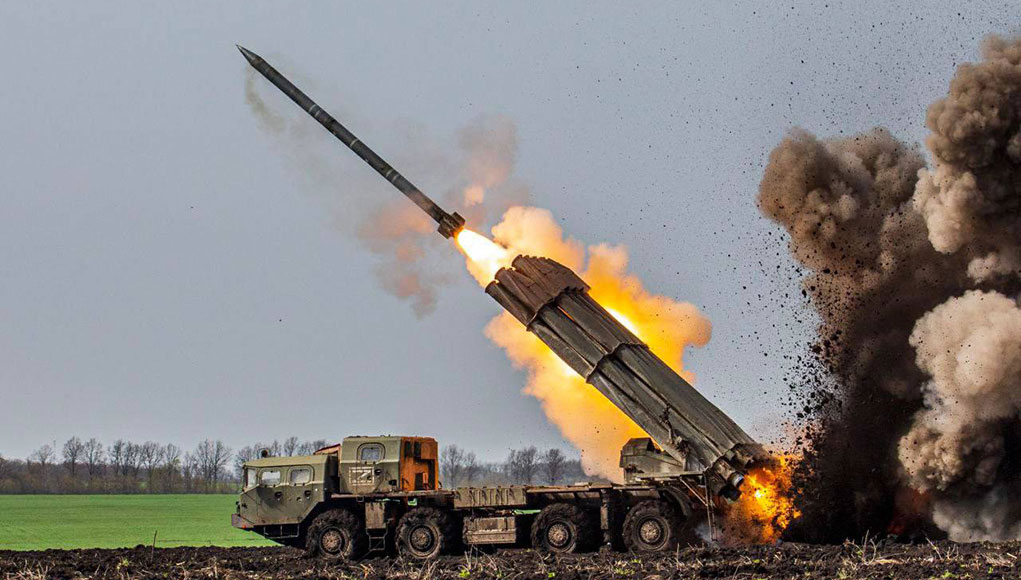The collapse of the first phase has led to a fires-heavy campaign. The Russians have used most weapon types in their arsenal, from volleys of long-range rockets, missiles, cruise missiles, and aerial bombing. Ukraine also used many of these weapons – the short- and medium-range multiple launcher rocket systems such as BM21 Grad (122mm), BM27 Organ (220mm), and BM30 Smerch (300mm). Artillery formations included the towed D-30 and self-propelled assets, including the 2S19, 2S32 152mm howitzers, and the 2S7M Malka 203mm howitzer that could strike at the longest range of 55 km.

The rockets, artillery, and missile barrages were devastating, particularly against infrastructures and urban areas. However, due to their distinctive signature and predictable rearming procedures, artillery formations often fell prey to superior intelligence and surveillance provided by the West.
This intel was coupled with real-time reconnaissance obtained by amateur drone pilots that joined to support the military to direct counter-artillery fires and military drones such as the TB2, that could also strike the firing units with small but deadly guided weapons. Both sides used similar assets, except the mighty TOS-1A thermobaric rocket launcher deployed with several BTGs participated in the operation, but there is no evidence of its performance in the battles.

The Russians turned to more extensive and longer-range weapons to overcome this vulnerability, including the Iskandar-M and -K, sea-launched Kaliber, air-launched cruise missiles, and the very-long range Kinzhal hypersonic weapon that made its debut in this war. Coastal-based Bastion (Onyx) and ship-based Yakhont supersonic cruise missiles were also used against targets in the coastal region. Missiles attacks were largely successful, as different missiles overcame Ukrainian air defenses using various techniques. Hypersonic speed (Kinzhal), using decoys and terminal maneuvers (Iskander), low altitude nap-of-the-ground flight (Caliber), or high supersonic speed (KH39, Onyx/Yakhont) were all used.
The Russians used everything they could fire, indiscriminately attacking targets with military significance. They struck ammunition reserves or military-industrial plants, municipal and government buildings, infrastructures such as fuel, water, transportation hubs, and residential buildings, intending to cause terror and remove the civilian population, as they have done in the past Chechnya and Syria.
Ukraine, on its side, also used ballistic missiles, primarily the SS-21 Tochka, that can attack targets at a distance of 70-120 km. These relatively old missiles scored marginal successes, and quite a few such missiles were lost before they reached their targets for unknown reasons. (The Artillery War – Continued)
Other chapters in this report:




















